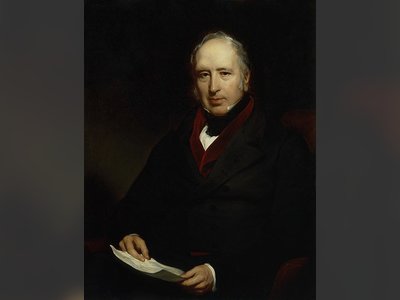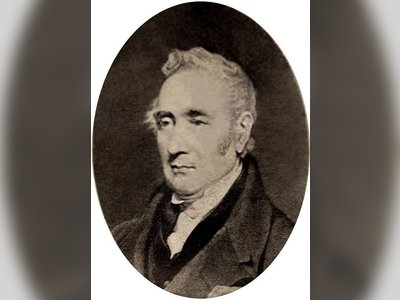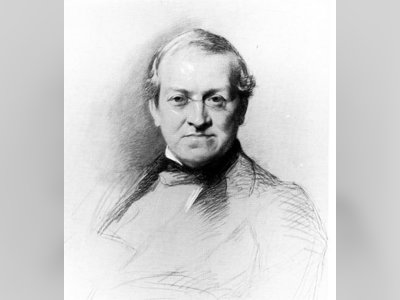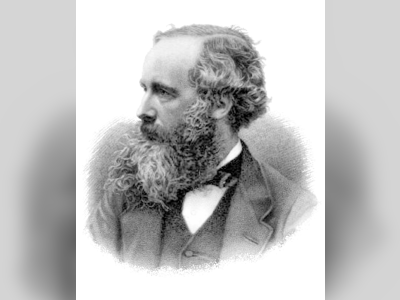British Heritage
Remember, Cherish, Learn.
beta
William Fothergill Cooke - The Public Telegraph 1846
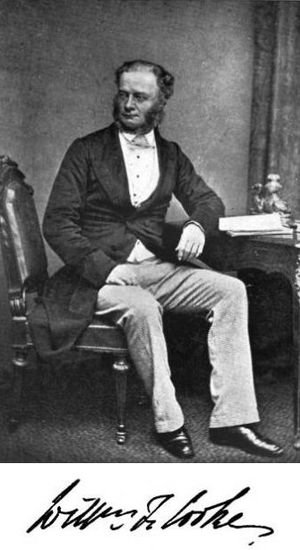
Telegraph Pioneer and Harbinger of British Technological Heritage.
The Luminary: Sir William Fothergill Cooke
Born on 4th May 1806, in the quaint Middlesex town of Ealing, Sir William Fothergill Cooke emerged as one of the iconic figures in the annals of British history. His invaluable contribution to the technological transformation of Britain and the world at large is enshrined in his co-invention of the Cooke-Wheatstone electrical telegraph system, patented in May 1837. Not only did Cooke foster the advancement of technological communication, but his trailblazing efforts also paved the way for the establishment of the world's first public telegraph company, the Electric Telegraph Company, in 1846. For his distinguished services, he was conferred a knighthood in 1869, cementing his legacy as a pioneering figure in Britain's telecommunication history.
Cooke, the son of a local surgeon and professor of anatomy at the University of Durham, received his education from Durham School and later at the University of Edinburgh. His early career led him to serve in the Indian Army, but after five years, he was drawn back to academia. He pursued medical studies in Paris and under Georg Wilhelm Munke at Heidelberg. This academic expedition turned out to be pivotal as it was here that Cooke encountered the emerging field of electric telegraphy.
The Inception of Telegraphy: Cooke's Vision
In 1836, Cooke witnessed an experimental telegraph device used in Munke's lectures, a system based on the principle introduced by Pavel Schilling in 1835. This encounter was a turning point, triggering Cooke's shift from medicine to technology, and nurturing his ambition to incorporate telegraphy within the burgeoning railway systems.
Returning to England in 1837 with renewed zeal, Cooke found valuable alliances in scientific luminaries such as Michael Faraday and Peter Mark Roget. It was through their introductions that he met Charles Wheatstone, a scientist renowned for his work on electricity's velocity. Intrigued by Cooke's telegraph system, Wheatstone agreed to partner with him. This partnership was instrumental in the progression of telegraphy, as while Wheatstone brought his scientific expertise, Cooke offered his business acumen, resulting in a potent combination.
The duo's initial patent, issued within a month of their partnership, detailed the use of electric currents in electric circuits for signalling and sounding alarms in distant locations. The London & Blackwall Railway, London & Birmingham Railway, and the Great Western Railway served as the initial testing grounds for their invention.
From Conception to Fruition: The Telegraph
The original five-needle model of the telegraph was deemed too costly, prompting Cooke and Wheatstone to innovate further. In 1838, they patented an improved two-needle apparatus, making significant strides towards a more practical and affordable telegraph system. This relentless pursuit of innovation bore fruit in 1845 when they successfully introduced the single-needle apparatus, revolutionising the telegraph's utility and affordability. This invention led to the swift adoption of the electric telegraph across all British railway lines.
Simultaneously, a dispute arose between Cooke and Wheatstone regarding their respective contributions. A settlement in 1843 assigned several patents to Cooke, with a mileage royalty reserved for Wheatstone. The following year, 1846, saw the formation of the Electric Telegraph Company, which purchased Cooke and Wheatstone's earlier patents for £120,000.
Despite some legal contention regarding patent extensions, Cooke's contribution to telegraphy was nationally recognised. In 1867, both Cooke and Wheatstone were awarded the prestigious Albert Medal of the Royal Society of Arts. A knighthood followed for Cooke in 1869, a year after Wheatstone's similar honour.
Legacy of Sir William Fothergill Cooke
After a fruitful and impactful life, Sir William Fothergill Cooke passed away on 25th June 1879, leaving behind an enduring legacy in the field of telecommunication. In testament to his contributions, British Rail Telecommunications honoured him posthumously in May 1994 by naming a locomotive, the '20075 Sir William Cooke.'
Cooke's legacy lies not merely in his innovations but also in the paradigm shift he helped initiate. His determination to transform an experimental technology into a commercial success created a benchmark for future entrepreneurs and inventors. Through his role in the inception of telegraphy and the establishment of the first public telegraph company, Cooke indelibly etched his name in British heritage and the annals of global technological history. His contribution underscores Britain's role in the technological revolution of the 19th century, a period that marked the transition into the modern, interconnected world we inhabit today.
- William Fothergill Cookeen.wikipedia.org
